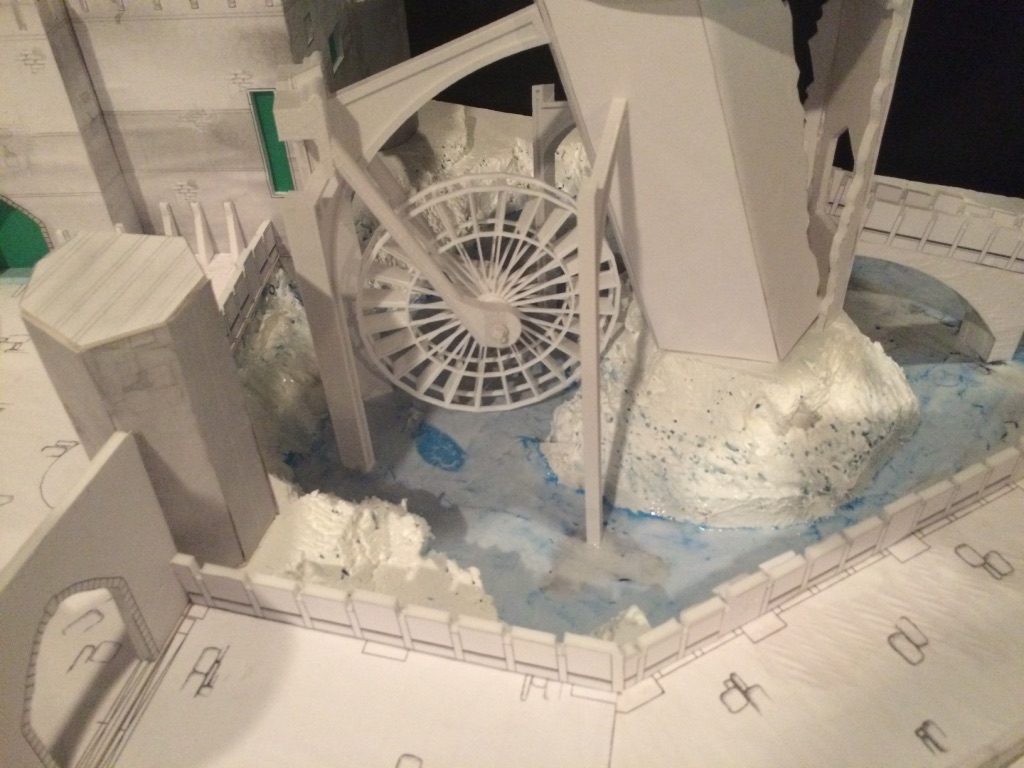Castle Brass: a set from the Count Brass trilogy (Michael Moorcock)
Background
The sets derives from the second book in the trilogy of ‘The Chronicles of Castle Brass’. I have designed and created two separate sets. The smaller of the two is a studio set of the protagonist’s quarters, and the larger model shows the lead up to and exterior of castle Brass’ keep. The second book is based in an alternate timeline, as the first book closes with the protagonist Hawkmoon re-writing his own history. The sequence I have chosen starts off 5 years after the great battle of Londra (the final battle of the Great War). The main character, Hawkmoon, is coming to terms with the death of his wife (in this timeline), and has locked himself away on the top of the tallest tower in the castle, and plays out all of the different battle scenarios in which his wife could have lived.
Castle Brass
Michael Moorcock, the author of The Chronicles of Castle Brass, describes Castle Brass as “..a mixture of architectural styles which, somehow, did not seem to clash with each other”. I have drawn inspirations from such, by using the Norman Era to inspire the main body of the castle, whereas the tower is centred on brutalist concrete architecture. Similarly, Moorcock states that the castle has witnessed many “additions and renovations; at the whim of different owners parts had been torn down and other parts built”. I have tried to echo this through the brickwork of the various sections, and in the contrast between different areas for example the gate house and the glass walkway. The use of the flying buttresses reflects the castle’s modesty as it was not built to impress anyone. Moorcock specifically states that the castle is not meant to be strong, its main focus is to be homely. Thus, the flying buttresses are there to support the falling castle, as in my interpretation of the set the owners felt no need to ensure that its outside appearance is perfect, but were more concerned with keeping it all in-tact. However, as with most of the choices in the set it was primarily chosen as a storytelling device, as a flying buttress would be excellent for shooting through with the camera.
Hawkmoon’s Quarters
This model depicts the top of the tower in which Hawkmoon has shut himself awa. Hawkmoon is replaying the events of the battle using the large war tables .He has closed himself off from the outside world, and the set symbolises such removal. The tower’s isolation in the water and how his quarters are precariously balanced above the tower, perfectly mirrors his imbalanced mental state. I have tied it to the exterior set via the inclusion of the top of the tower’s ruins at the base of the set. Despite the exterior being circular on the backlot set, I choose to make the interior octagonal. This is in keeping with my research, as Castle Coch (another castle which was designed for comfort rather than fortification) utilised such methods in its towers.





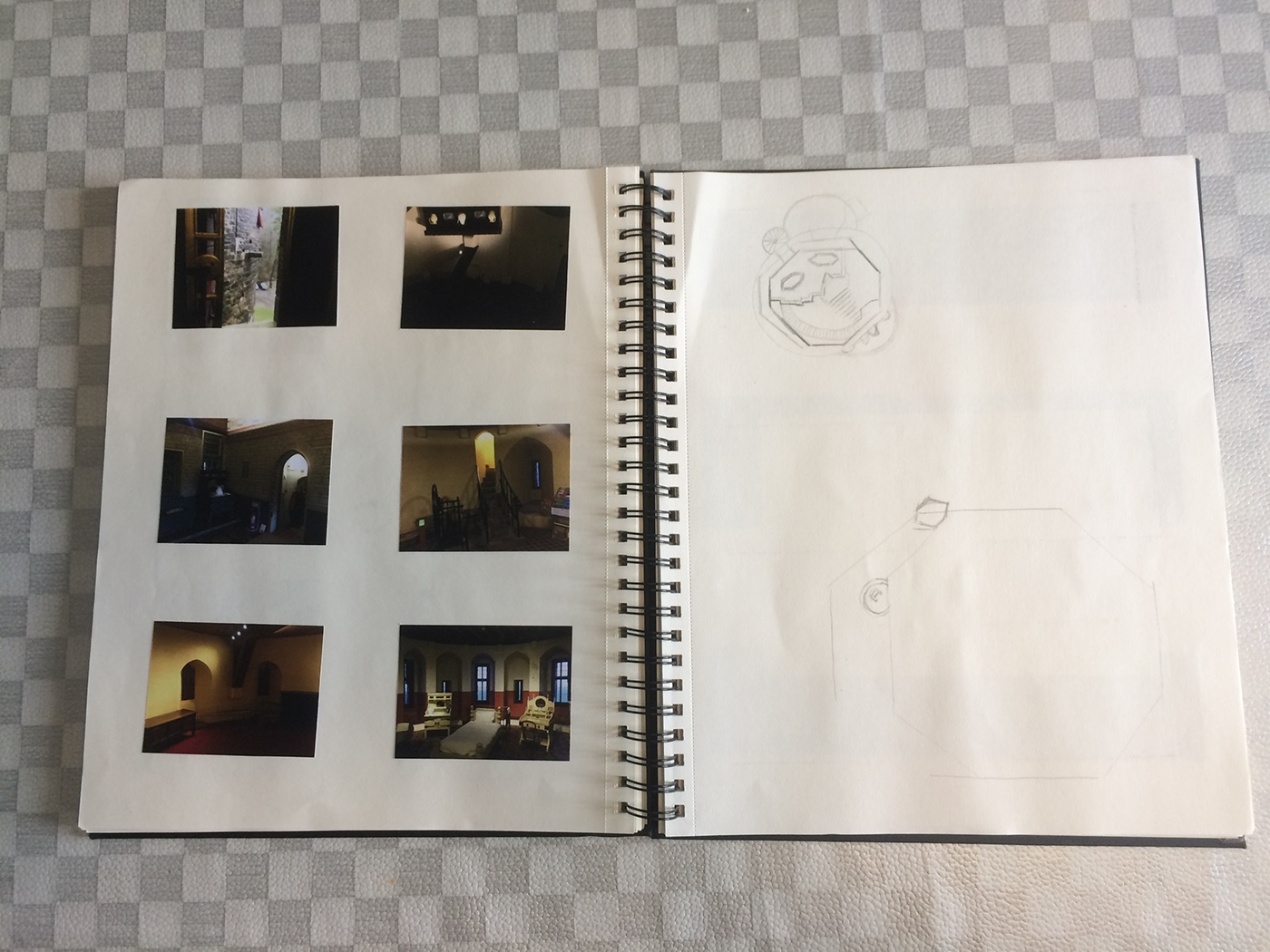
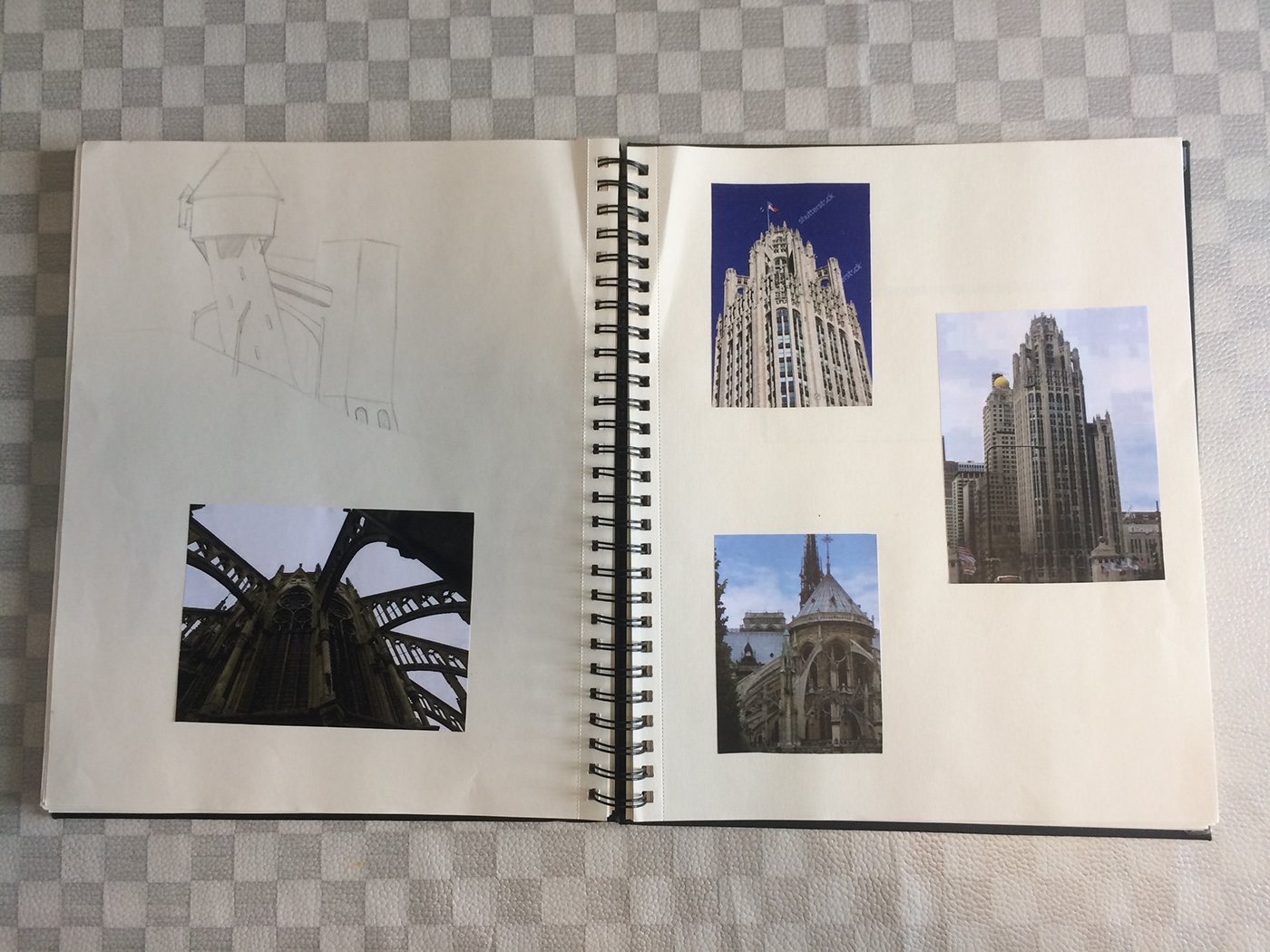
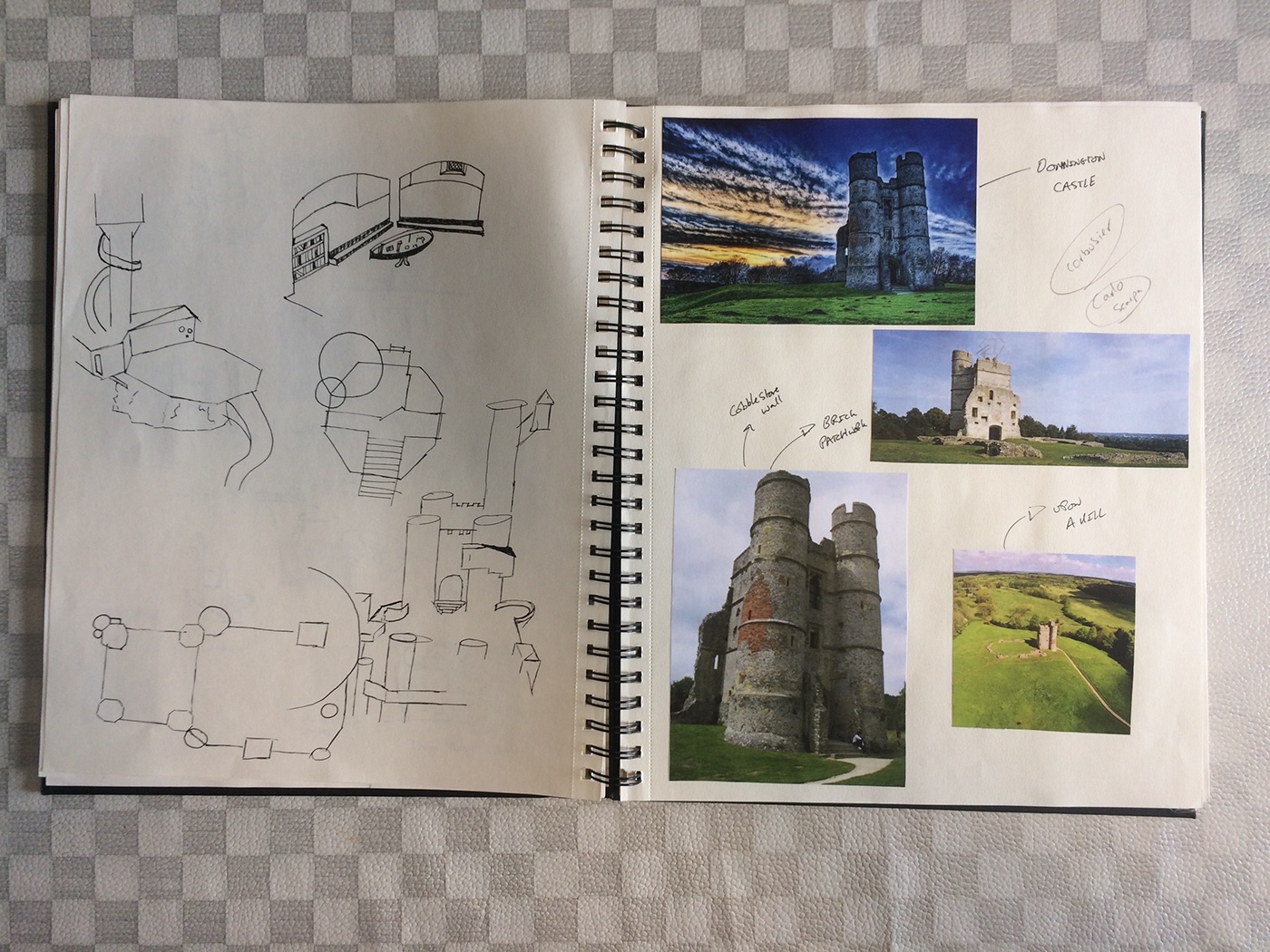





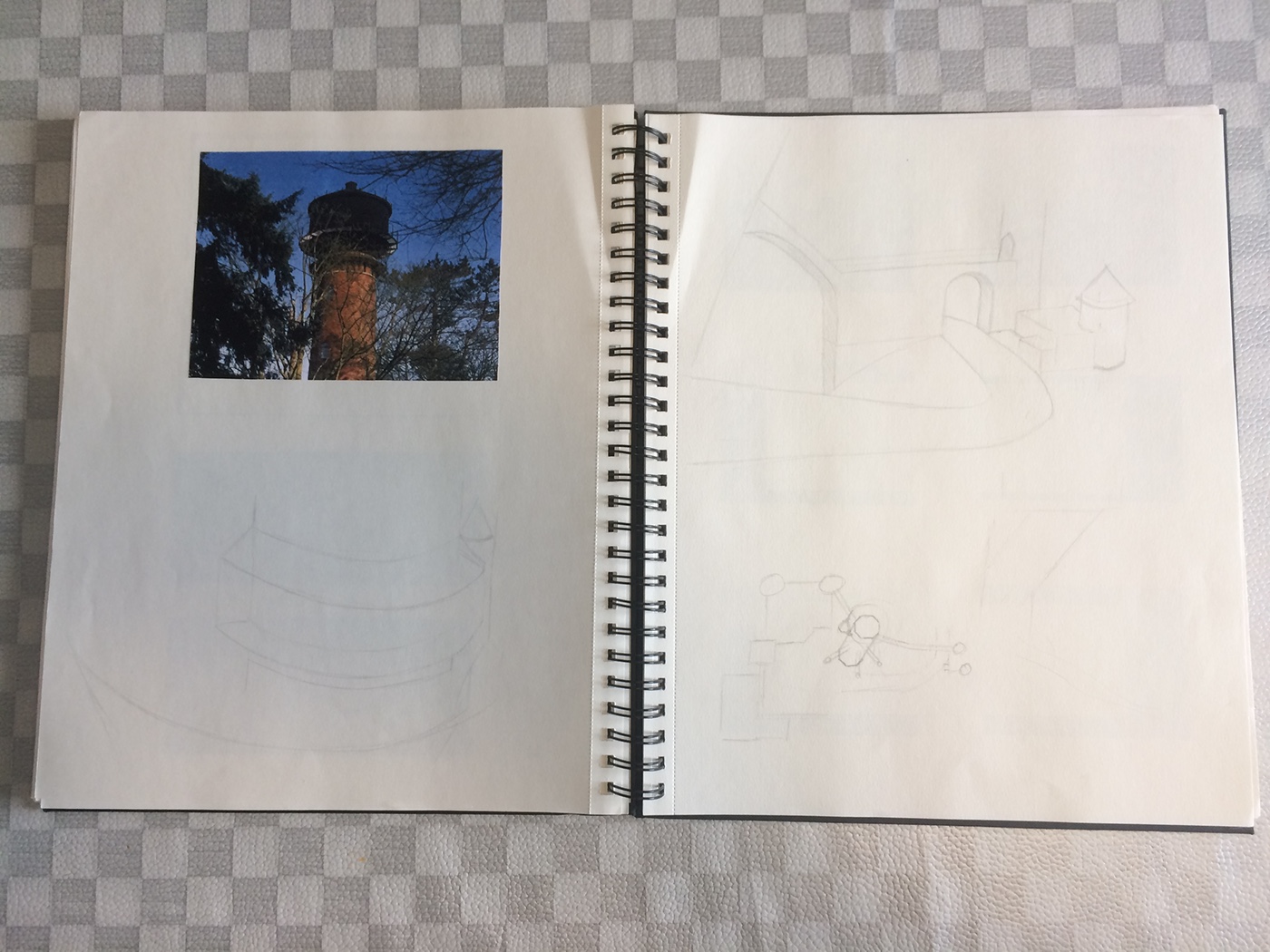


Early design concepts










Project build
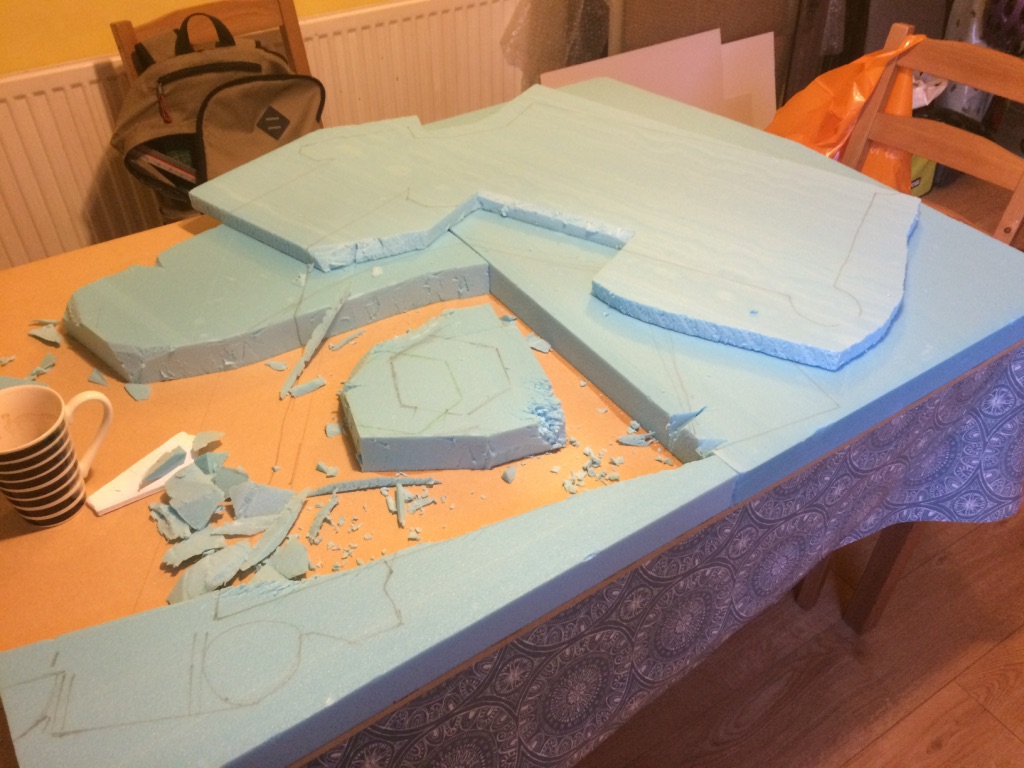

Fiberglassing
I wanted to have real water within my model, which meant various tests being carried out to see how best to water-proof my design. Ultimately I decided to fiberglass the lake area of the set (which I had designed to sit inside the exterior tank at Leavesden studios).




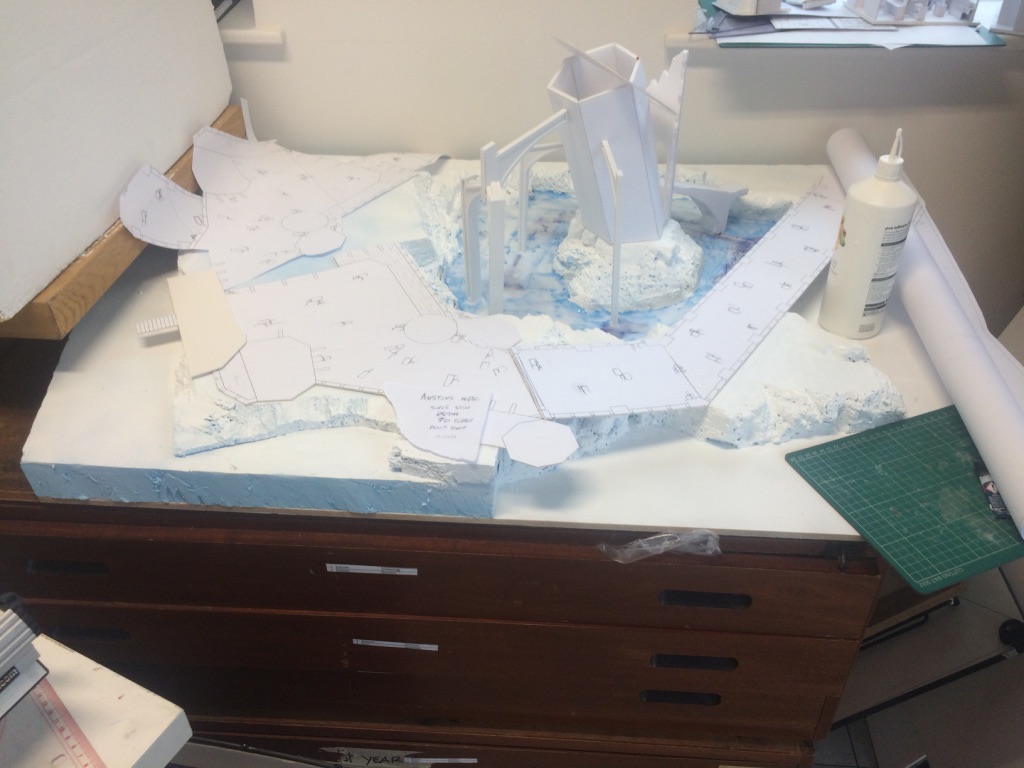

Interior model construction

The exterior of the tower proved to be difficult to model, as I had designed it to not only taper outwards, but also to be round. In oder for it to sit on top of the other tower ruins I had to make a support structure (pictured below).



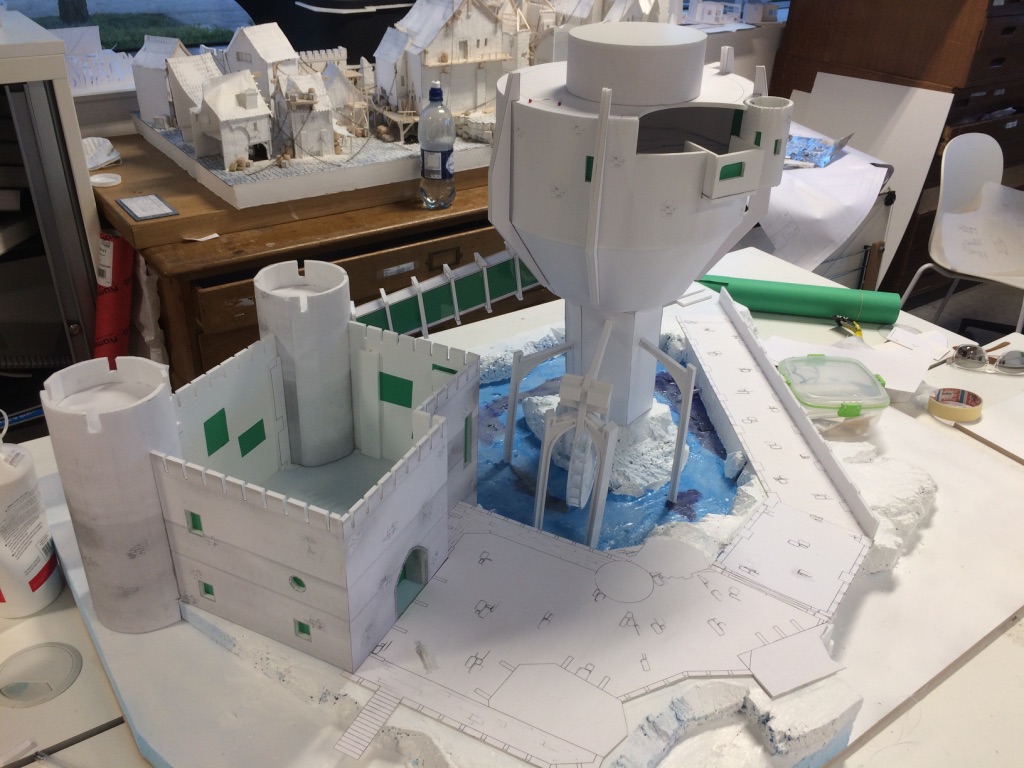
Finished Model

